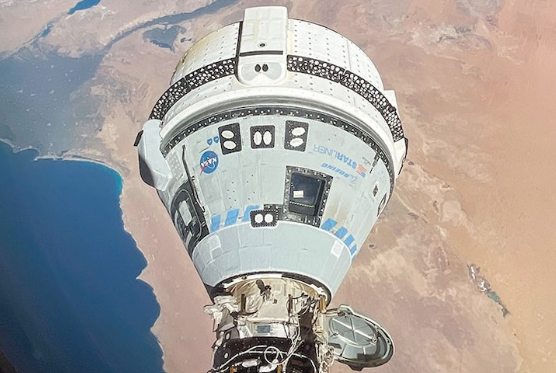Safety comes first. So to all who keep complaining about the return trip, seriously chill out. Even if the issues are small, when it comes to the lives or our astronauts, it is far more important to make sure all are safe and in the least amount of danger. No reason to rush it all.
Two U.S. astronauts, Barry “Butch” Wilmore and Sunita Williams, are set to remain on the International Space Station (ISS) for nearly two weeks longer than initially planned due to issues with their Boeing Starliner spacecraft. Originally scheduled to return to Earth on June 26, their stay has been extended because of persistent problems including helium leaks and thruster issues, marking yet another setback for Boeing’s space program.
Launched on June 5, Wilmore and Williams arrived at the ISS on June 6, intending to stay for approximately seven days. However, their mission has been prolonged due to technical difficulties encountered by the Starliner as it neared the space station. Specifically, five of the spacecraft’s thrusters were automatically shut down by its onboard computers, requiring four to be reactivated, while the propulsion system experienced several minor leaks.
BREAKING: Boeing whistleblower claims Boeing refused to discard faulty parts which could have been used in newly built aircraft, resulting in a “catastrophic event.” pic.twitter.com/iIJOUut4Og
— The General (@GeneralMCNews) June 19, 2024
This extension means the astronauts will spend more than twice the intended duration in space, with the Starliner expected to make its return landing in New Mexico using parachutes. Despite these challenges, the issues with the spacecraft are not deemed critical, and such problems are not uncommon during spacecraft testing phases. NASA and Boeing officials are set to thoroughly analyze the vehicle in the coming days to prepare for the astronauts’ safe return.
The recent difficulties add to Boeing’s troubles, which include a safety crisis involving its 737 Max airplanes. A notable incident occurred in January when a door blew off a flight over Oregon, prompting increased regulatory scrutiny. This issue was highlighted during a recent U.S. Senate hearing where Boeing’s outgoing CEO, David Calhoun, faced intense questioning from families affected by two prior 737 Max crashes. Despite the criticism, Calhoun expressed pride in Boeing’s safety record.
Boeing Starliner stuck on space station as more helium leaks discovered. But the way NASA replied, seemed to trivialise the issue. Hope it’s really a small issue and the 2 astronauts can safely return to earth. https://t.co/xRZZweP3WM
— Huigoona (@Huigoona) June 18, 2024
Currently, the ISS is home to a longer-term crew consisting of four American and three Russian astronauts. The station is well-stocked with several months’ worth of food supplies, and the Starliner can remain docked for up to 45 days. If necessary, further delays could push the astronauts’ return to as late as July 2.
NASA’s Steve Stich emphasized the caution being exercised due to the Starliner being a crewed vehicle, stating, “I think we’re taking our extra time, given that this is a crewed vehicle, and we want to make sure that we haven’t left any stone unturned.” He reassured that there appears to be no scenario in which the Starliner would fail to return Wilmore and Williams safely.
Starliner ISS stay extended to complete thruster and helium leak testing https://t.co/N2o7qne0Hs #neuco pic.twitter.com/0NTW6RbDc2
— Laurie Scott 🛰🚀🌍📡 (@Laurieneuco) June 19, 2024
The Starliner program is crucial for Boeing as it seeks to compete with Elon Musk’s SpaceX, which has been transporting astronauts to the ISS since 2020. Before SpaceX, NASA relied on Russian spacecraft for astronaut transport. Despite the setbacks and over $1.5 billion in losses on the project, Boeing is committed to completing six NASA missions under a $5 billion contract awarded in 2014.
Key Points:
i. Extended Stay: US astronauts Barry “Butch” Wilmore and Sunita Williams will remain on the International Space Station (ISS) for nearly two weeks longer than planned due to technical issues with their Boeing Starliner spacecraft, including helium leaks and thruster problems.
ii. Technical Challenges: The Starliner encountered several difficulties as it neared the ISS, leading to the shutdown and subsequent reactivation of multiple thrusters. The propulsion system also experienced minor leaks.
iii. Safety and Preparations: NASA and Boeing are carefully analyzing the spacecraft to ensure a safe return journey for the astronauts. Despite the setbacks, officials are confident that the issues are manageable and not critical.
iv. Broader Boeing Challenges: The delay in the astronauts’ return adds to Boeing’s ongoing troubles, which include a safety crisis with its 737 Max airplanes. The aerospace company is facing increased scrutiny and has suffered significant financial losses.
v. Mission Impact: This incident extends the astronauts’ mission duration to more than double the originally planned time. If further delays occur, the astronauts might not return until July 2. This situation underscores the challenges and complexities of space travel and spacecraft reliability.
Al Santana – Reprinted with permission of Whatfinger News



